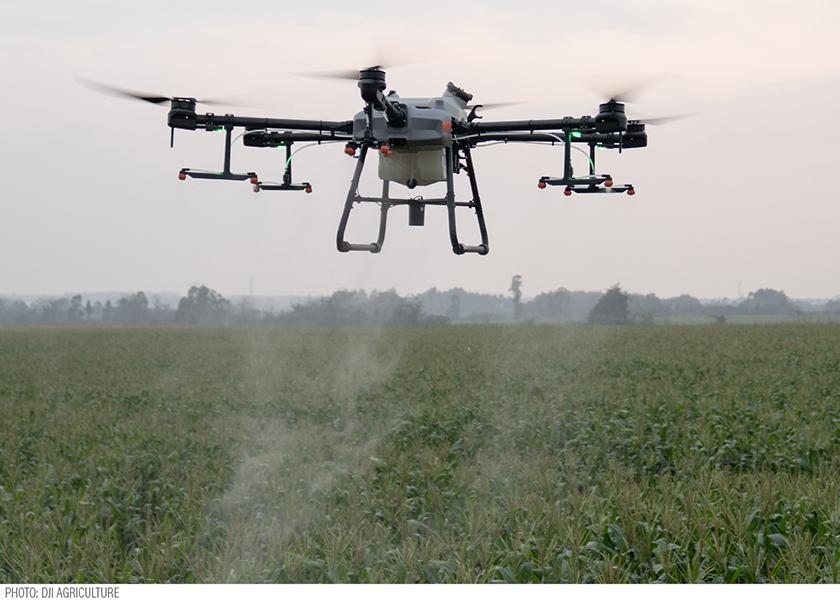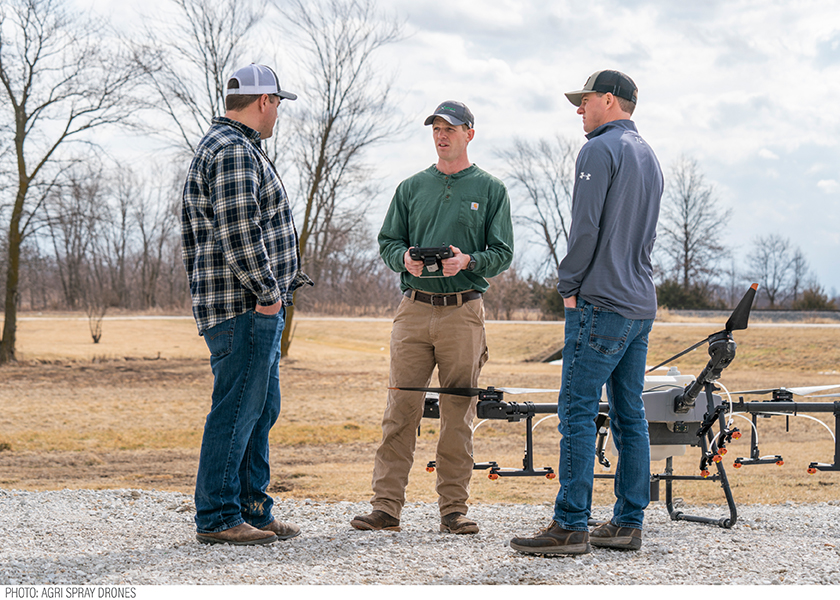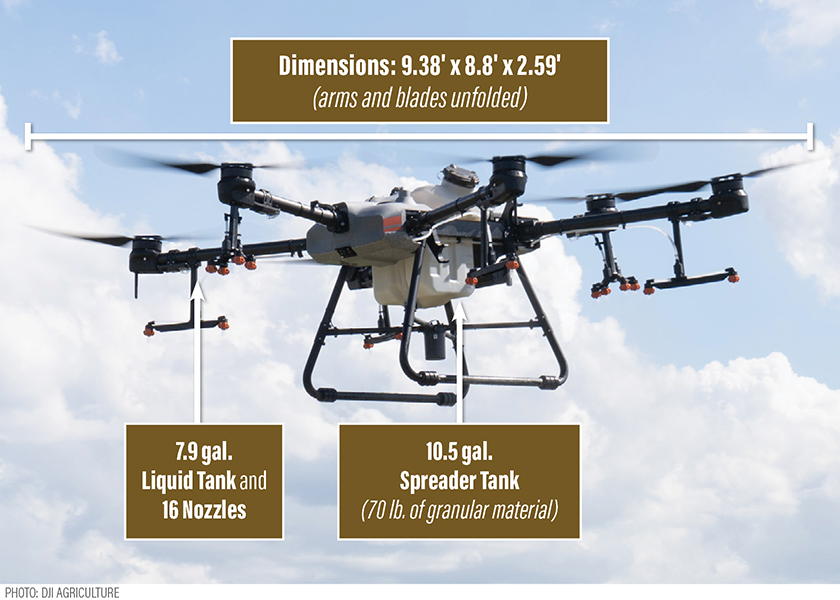When and Where Applications: The Rise of the Sprayer Drone

Apply product when and where you need it at the optimum rate
From a rescue fungicide application to cover crop seeding, sprayer and spreader drones are earning their place on farms. They can provide a cheaper, faster and more flexible method for in-field applications.
“When it comes to doing things on your own on the farm, aerial application is the last frontier,” says Taylor Moreland, owner of Agri Spray Drones. “Sprayer drones let you do your own aerial application when, where and how you want it done.”

PRECISE AND TIMELY
Instead of using a sprayer with 120' booms or hiring a crop duster to treat a 25-acre field, you can send in a drone with a 9' wingspan and 29' swath, carrying 8 gal. of product. In less than an hour, you could spray the entire field at the optimum application rate.
“Sprayer drones won’t replace ground rigs,” Moreland says. “But where they are a great fit is for low-volume, variable-rate or spot applications in small fields or fields with topographic changes. Drones are similar to crop dusters, but they can fly lower, slower and more precise.”
Awkward acres or small applications are where drones win the efficiency race, adds Emily Carlson, director of marketing for Rantizo.
“In terms of economics, drones are best in sub-field applications,” she says. “If 25% of your field needs sprayed in one corner and 10% on the opposite corner, a drone is a better option. If you’re talking hundreds of acres of flat rectangular fields, a ground rig is probably a better choice.”
Drones can quickly treat random outbreaks of end-of-season weeds or interseed cover crops without damaging the growing crop, Carlson says.
AUTONOMOUS ACTION
Sprayer drones, such as the popular DJI models, are fully autonomous, Moreland says. Their tanks range from 10 liters to 30 liters in size. Application steps include:
- Collect the field boundary.
- Input parameters (flight height, speed, rates, etc.) and press take off. The drone goes to work.
- When empty, the drone returns.
- Refill the tank, replace the battery and the drone takes off again.
“You can typically go through two tanks of product per one battery charge,” Moreland says. “We bring a generator to the field, one charger and three batteries so you can continually be charging batteries.”
To spray with a drone, you must have a drone pilot’s license, a state pesticide applicator license and other requirements. As for cost, Moreland says sprayer drones range from $20,000 to $40,000.
New-Age Workhorse
The Agras T30 is one of the largest sprayer drones on the market. It is completely autonomous and can detect obstacles.








